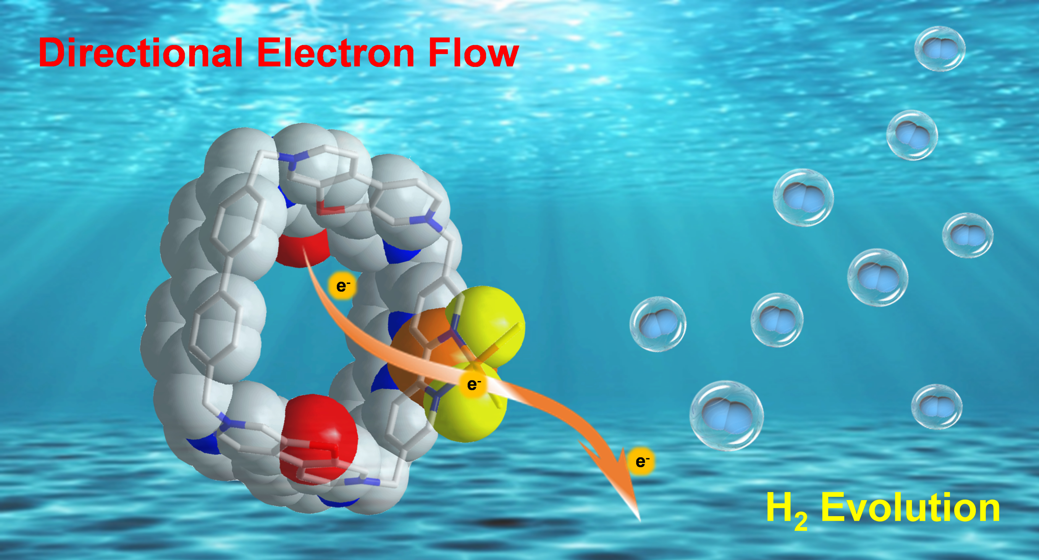Directional electron flow in the photocatalyst enables efficient charge separation, which is essential for efficientphotocatalysis of H2 production. Here, we report a novel class of tetracationic cyclophanes (7) incorporating bipyridinePt(II) and selenoviologen. X-ray single-crystal structures reveal that 7 not only fixes the distances and spatial positionsbetween its individual units but also exhibits a box-like rigid electron-deficient cavity. Moreover, host–guest recognitionphenomena are observed between 7 and ferrocene, forming host–guest complexes with a 1 : 1 stoichiometry. 7 exhibitsgood redox properties, narrow energy gaps, and strong absorption in the visible range (370–500 nm) due to containingtwo selenoviologen (SeV2+) units. Meanwhile, the femtosecond transient absorption (fs-TA) reveals that 7 has stabilizeddicationic biradical, efficient charge separation, and facilitates directional electron flow to achieve efficient electrontransfer due to the formation of rigid cyclophane and electronic architecture. Then, 7 is applied to visible-light-drivenhydrogen evolution with high hydrogen production (132 μmol), generation rate (11 μmol/h), turnover number (221), andapparent quantum yield (1.7 %), which provides a simplified and efficient photocatalytic strategy for solar energyconversion

原文链接:https://onlinelibrary.wiley.com/doi/epdf/10.1002/anie.202410525